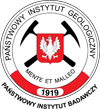The Carboniferous was established in 1822, based on geological observations from England and Wales. Its name derives from the Latin word for coal (carbon). Although the Carboniferous period is known for some time, the dating of its base remains debatable.
Paleogeography
The main phases of the Variscan (Hercynian) orogeny took place in the Carboniferous. As a result, all the continental landmasses collided to form a new single supercontinent, Pangea, and the massive mountain ranges called Variscides (or hercinids) marked the collision zones. These ranges stretched through Europe, Africa, Asia, Australia, and North America. Traces of that orogenic event can be found in the Polish Sudetes and the Holy Cross Mountains.
Climate
The early Carboniferous was warm and relatively humid around the equator. Later, the climate began cooling, forming an extensive glacial cover over the South Pole at the end of the period.
Life on Earth
Life in the sea
At the beginning of the period, the last graptolites went extinct, and the previously lush reefs became small and species-poor. On the other hand, the diversity of echinoderms, and among them, crinoids, rose significantly. There were so many of them that their skeletons became material for new kinds of rocks.
Fishes diversity
The Carboniferous is the golden age of sharks, which took over the mantle of apex predators after armoured fishes, which went extinct at the end of the Devonian. Lobe-finned fishes reached extreme sizes, like Rhizodus, the largest known freshwater fish, reaching up to 7 metres in length.
Giant invertebrates
The characteristic component of the Carboniferous forest fauna were the huge invertebrates, like metre-long scorpions or two-metre-long millipedes like Arthropleura. These giant sizes could have been reached likely thanks to an increased amount of oxygen in the atmosphere.
Amniotes
The first amniotes appeared in the Carboniferous. They are a group of vertebrates that undergo embryonic development that includes several membranes surrounding the embryo for protection, gas exchange, and metabolic waste disposal. This adaptation enabled reproduction on land without the need for nearby water, unlike, e.g., amphibians. The ability to lay shelled eggs allowed vertebrates to spread globally. The ancestors of mammals (Synapsida) and reptiles (Sauropsida) evolved from amniotes.
Do you know that...
The wingspan of a dragonfly Meganeura reached 60-70 centimetres.
















